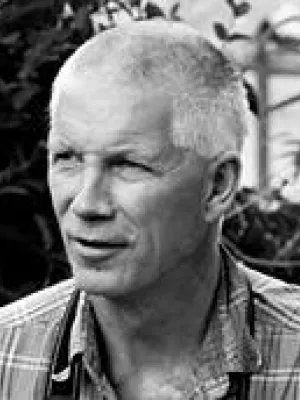
Jonas Ardö
Professor

Evaluating the Potential of Southampton Carbon Flux Model (SCARF) for Monitoring Terrestrial Gross Primary Productivity Across African Ecosystems
Author
Summary, in English
Accurate knowledge about the amount and dynamics of terrestrial gross primary productivity is an important component for understanding of ecosystem functioning and processes. Recently a new diagnostic model, Southampton Carbon Flux (SCARF), was developed to predict terrestrial gross primary productivity at regional to global scale based on a chlorophyll index derived from MERIS data. The model aims at mitigating some shortcomings in traditional light-use-efficiency based models by (i) using the fraction of photosynthetic active radiation absorbed only by the photosynthetic components of the canopy (FAPARps) and (ii) using the intrinsic quantum yields of C3 and C4 photosynthesis thereby reducing errors from land cover misclassification. Initial evaluation of the model in northern higher latitude ecosystems shows good agreement with in situ measurements. The current study calibrated and validated the model for a diversity of vegetation types across Africa in order to test its performance over a water limiting environment. The validation was based on GPP measurements from seven eddy flux towers across Africa. Sensitivity and uncertainty analyses were also performed to determine the importance of key biophysical and meteorological input parameters.Overall, modelled GPP values show good agreement with in situ measured GPP at most sites except tropical rainforest site. Mean daily GPP varied significantly across sites depending on the vegetation types and climate; from a minimum of -0.12 gC m2 day-1 for the semi-arid savannah to a maximum of 7.30 gC m2 day-1 for tropical rain forest ecosystems at Ankasa (Ghana). The model results have modest to very strong positive agreement with observed GPP at most sites (R2 values ranging from 0.60 for Skukuza in South Africa) and 0.85 for Mongu in Zambia) except tropical rain forest ecosystem (R2=0.34). Overall, the model has a stronger across-site coefficient of determination (R2=0.78) than MOD17 GPP product (R2=0.68). PAR and VPD are the parameters that propagate much variation in model output at most sites especially in semi-arid and sub-humid ecosystems. The results demonstrate that the SCARF model can improve prediction of GPP across a wide range of African ecosystems..Key words: GPP, climate change, diagnostic model, photosynthetic quantum yield, C3/C4 photosynthesis
Department/s
- Dept of Physical Geography and Ecosystem Science
- BECC: Biodiversity and Ecosystem services in a Changing Climate
Publishing year
2016
Language
English
Publication/Series
AGU Fall Meeting Abstracts
Links
Document type
Conference paper
Topic
- Physical Geography
Status
Published

